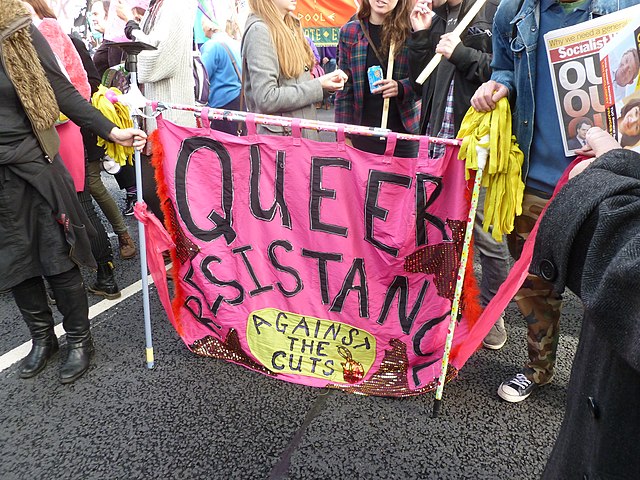You may have noticed that two new films came out recently. The release of Barbie and Oppenheimer – two frankly ordinary films – is being treated as a Great Cultural Event. We are being asked to pick a side. Are we pink and fluffy like Barbie, or deeply thoughtful and troubled like Oppenheimer? Are we fun or serious? Do we want to approach the current political crisis by embracing our inner child or by thinking deep profound thoughts?
According to director Greta Gerwig, Barbie is “most certainly is a feminist film. It’s that diving into the complexity of it and not running away from it.” Meanwhile, Oppenheimer is being celebrated as a great anti-nuclear film. Director Christopher Nolan said that the threat of nuclear war “became a reason for me to make the film,” a reason which intensified after Russia invaded Ukraine.
To the people who say “stop banging on about the politics of the films, it’s only light entertainment”, I’m happy to go along with this, as long as you apply the same standards to Greta Gerwig and Christopher Nolan, both of whom have shown a laudable ambition to address important issues.
The trouble is that – in my opinion – both films fall foul of their inner contradictions and are not able to deliver as powerful message as they could. Barbie is an anti-consumerist film which is riddled with consumerism, while Oppenheimer wants to address radical politics, but can only do so from a conservative standpoint.
Barbie’s dirty deal with Mattel
I have already written about Barbie elsewhere, so I don’t want to go in too much detail here about the content of the film. Instead I’d like to talk about the compromises which were made to bring it to the screen. Mattel, the makers of the Barbie doll, which has been shown to negatively impact young girls’ body image, eagerly backed the film’s release despite scenes which gently mock the lack of female representation on Mattel’s board.
It seems that the film was even Mattel’s idea. As Eliana Dockterman reported in Time magazine: “Barbie’s move to Hollywood is the brainchild of Mattel CEO Ynon Kreiz, who came into the job five years ago with a vision to leverage the company’s intellectual property into a cinematic universe based on Mattel toys.” In the same article, Dockterman tells us that back in 2018, Barbie producer Margot Robbie, who also plays Barbie, met with Mattel executives to promise them “we are going to honour the legacy of your brand”.
Robbie went on: “if we don’t acknowledge certain things—if we don’t say it, someone else is going to say it. So you might as well be a part of that conversation.” This conversation is, of course, about maximising Mattel’s profits. Mattel can cope with the film’s mild criticisms, knowing that Robbie and the film’s production team are otherwise offering unconditional support. Meanwhile the corporation’s tills ring up record profits.
What’s in it for Mattel?
For reasons that we don’t have to get into here, I was recently in the toy department of Kaufhof on Alexanderplatz, which has become a shrine to all things Barbie. The online market is similarly flooded. For a mere $25, you can buy a best-selling Margot Robbie Barbie The Moviedoll on Amazon. If you have a bit more to spare, you can pay £1281 for a Balmain x Barbie Cropped Logo Sweater.
Women’s Wear Daily reports that “thanks to the highly anticipated Barbie movie, the doll industry is expected to surge to $14 billion by 2027.” WWD attributes this to a new Barbiecorefashion trend which “has seen a lot more brands embracing rich bright pink shades from Valentino to H&M collections”. People who are worried about gender stereotyping have fought for decades to stop girls being forced to wear pink. This is now being sold back to us in the name of feminism.
It is not just about toys. A breathless article on airbnb.com announced “In celebration of the highly anticipated release of BARBIE, Ken is inviting two lucky guests to stay in the newly revamped Malibu DreamHouse in all its Kendom glory.” The article went on to describe the apartment: “Located in sunny Malibu, the oceanfront mansion features panoramic views and serves as the perfect backdrop for Ken’s picture-plastic paradise”.
Meanwhile, Mattel has signed licensing deals with more than 100 brands, as reported by the Guardian: “meaning that this summer as well as dressing in Barbie apparel from Gap, Primark or Forever 21, wearing her shoes from Aldo or inline skates from Skatehut and sporting her makeup (NYX Cosmetics and others), you can also relax on a Barbie x Funboy pool float while enjoying Pinkberry’s Barbie-branded frozen yoghurt.”
You could argue that venal companies like Airbnb, Gap and Mattel have been exploiting popular culture for decades – and you’d be right. But the sad fact is that the makers of the “feminist, anti-capitalist” Barbie film have consciously got into bed with these parasites to help them raise their profit margins. This seriously undermines the film’s apparently radical message. In the film, as in real life, the Mattel executives are lightly satirised but they are never punished.
This is the contradiction of “anti-corporate” films like Barbie, which rail against Mattel’s anti-feminism, while buddying up with their corporate overlords. Warner Brothers, who released the film, paid Mattel $25-$50 million. In addition, Mattel is expected to receive 5%-15% sale fee on any collaboration.
Oppenheimer’s inherent conservatism
Barbie, then, exhibits a certain type of conservatism. While loudly declaiming its feminism and anti-corporatism, it has worked closely with the very corporations which it has been denouncing. There is money to be made by attacking the 1%, and both Warner Brothers and Mattel are keen for part of the action.
Oppenheimer, which is trying to market itself as a “serious” film, will not indulge an explicit marketing campaign which is so venal, although I’m sure that the film’s accountants are rubbing their hands in glee at the added box office created by the endless memes and articles on Barbenheimer (including this one. D’oh!)
Oppenheimer’s conservatism is more visible in its political content, which rarely veers from an establishment point of view. In my original review of the film, I described Oppenheimer as being a film by and for white men in suits. Let me briefly repeat that argument.
Firstly, the almost entire lack of women. Oppenheimer conspicuously fails the Bechdel test, and then some. If you look at the cast list on IMDB, you see 79 names of which 13 are women. While the men get some meaty parts, the girls are given the empowering roles of “laughing woman”, “kissing woman”, and “consoling women”. Florence Pugh, one of the greatest actors of her generation, has little more to do than sit around with her top off.
Secondly, the predominance of white men. Some people have defended their predominance by pointing out that this reflects academia and politics in mid-20th Century USA. Nonetheless, it was an editorial decision to only show the state murder of tens of thousands of Japanese men and women through the eyes of the white, male lead.
Thirdly, although Oppenheimer, the film, is nominally anti-nuclear, it is not a call to action. I can only endorse the facebook post (can’t remember who made it, but if it was you, thank you), that said that no-one went on an anti-nuclear demo as a result of watching Oppenheimer. But maybe they did attend a few dull committee meetings.
Oppenheimer’s conservatism means that it sidesteps some crucial political points. It rightly shows how many of the scientists working on the Manhattan project were Jews worried about the rise of Hitler, but shows no objection when the target moves to Japan. It mentions, but does not comment on, the bombing of Nagasaki, whose only purpose was as a show of strength for US imperialism. It shows the concerns of the men in suits, but not of anyone outside academia and official politics.
A film which takes place almost entirely in committee rooms is unlikely to articulate any opposition outside the political mainstream to the horrors which it depicts. It is surely no coincidence that the person who embodies the film’s hope for the future is not someone from the coming movement against the Vietnam war but a man who stood on the other side of the barricades –an “up-and-coming senator from Massachusetts called John F Kennedy”.
How this affects cinema in general
For all their differences, Barbie and Oppenheimer have one thing in common. They are both way too long. To its credit, Barbie does manage to clock in at less than 2 hours, but both films sag in the middle and are clearly dragging by the end. Some friends have said that they didn’t notice that Oppenheimer goes on for over 3 hours. All that I can say is that they must have higher tolerance levels for endless scenes of men in dreary meetings than I do.
As films get increasingly longer and Blockbusters get shown on multiple screens, there is less space for anything else, for films which are challenging or … any good. But never mind, after you have seen Barbie, you can watch Oppenheimer. Then you can watch Barbie again or wait for the inevitable sequel. So far writer Greta Gerwig says that she has no plans to make Barbie 2, but it’s surely only a matter of time.
Even if Barbie 2 is never made, Mattel has already announced 45 more films based on its toys, and other manufacturers are sure to follow suit. This accelerates a trend which has been around for a while. In an article that I wrote over 8 years ago, I noted that “31 of the 50 most expensive films are sequels, and a further 6 are remakes or adaptations of tv series, and even a board game (‘Battleships’).”
This has a serious impact on what we are allowed to see in the cinema. There are only so many screens to go round. Barbie and Oppenheimer may have “saved cinema” by making extra money for the film manufacturers (and their collaborators in Mattel), but this does not mean that they have delivered more diversity to the cinema-going public. After all, not every film director has the $150 million that Barbie paid for its marketing budget alone.
Maybe Nick Hilton is right when he predicts: “the reality is that major chains could very easily collapse. And those that are saved from disaster by administrators are going to be forced into the most brutal, creatively vapid process. They will only show Barbie and Oppenheimer and Spider-Man and Star Wars on a loop, because capitalism is cynical and there’s no room for romance. It will be a brutal form of programming by algorithm.”
What does it all mean?
Does this mean that Barbie and Oppenheimer are terrible films and that no socialist should be seen dead inside a cinema showing them? Of course not. They are both perfectly serviceable, and the acting is great. They start well, and – within their clear limitations – address a number of interesting issues. But let’s not limit our expectations to their bland corporate vision, and recognise them for what they are – vaguely liberal, establishment films.
Recently, Hollywood directors and actors have been striking against the monolithic film companies. One of their demands is for more control over what they produce. It is to their credit that actors and crew from Barbie and Oppenheimer have joined the strike. But until the strike started, the film’s producers preferred to work alongside Warner Brothers and Universal to make products in line with Mattel’s corporate vision.
Film is a battlefield, which the corporations try to dominate, but where theirs are not the only voices. The strike is showing in a very concrete way how big business stifles creativity and also how it can be challenged. Let’s hope that the strikers are successful. Meanwhile, it’s ok to enjoy the unchallenging entertainment of films like Barbie and Oppenheimer, but we should aspire towards much, much more.




